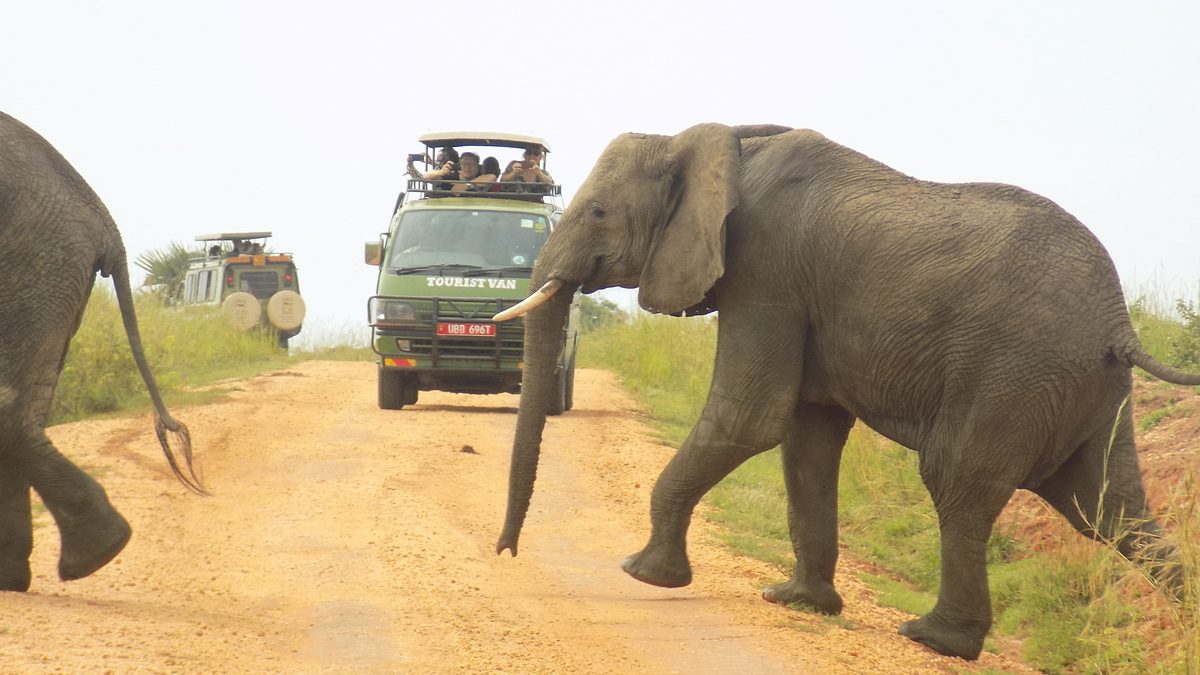Why Uganda’s tourism still trails behind Kenya and Tanzania – and the Pearl of Africa can catch up
A leading tourism entrepreneur, Amos Wekesa, pinpoints the missing link not in the country's natural beauty, but in strategy, connectivity, and collective will.

Despite boasting world-class attractions like mountain gorillas, stunning mountains, and vibrant culture, Uganda’s tourism sector continues to trail significantly behind its East African neighbors, Kenya and Tanzania. A leading tourism entrepreneur, Amos Wekesa, pinpoints the missing link not in the country’s natural beauty, but in strategy, connectivity, and collective will.
The disparity in visitor numbers is stark. In 2024, Kenya welcomed over 2.3 million international visitors, including more than 306,000 Americans and a staggering 181,000 Britons. Tanzania, in 2023, attracted over 1.8 million international tourists, with Europe alone contributing significant figures, such as 111,000 from France.
Uganda’s figures paint a far more modest picture for 2023. India led overseas arrivals with just 31,000 visitors, followed by the USA (17,700), UK (11,000), and China (9,900). Across all 50 European countries combined, Uganda barely managed to draw 60,000 tourists – a figure Kenya surpasses with arrivals from the UK alone in a single year.
Obstacles Holding Uganda Back
Wekesa identifies three persistent challenges impeding Uganda’s tourism growth:
Negative Travel Advisories: “Almost every European country places Uganda in the orange or red travel risk category,” Wekesa states. The USA’s Level 3 advisory, often unfairly grouping Uganda with less safe destinations, creates a perception issue that deters high-value travelers.
Connectivity Challenges: Until very recently, Uganda lacked direct flights from Europe. While Uganda Airlines has launched its London route, it faces stiff competition from established carriers like Kenya Airways and Ethiopian Airlines, which already dominate major hubs across Europe, Asia, and America.
Weak Marketing and Coordination: Unlike Kenya, where Kenya Airways, the Kenya Tourism Board, and embassies operate with a unified, strong narrative, Uganda’s marketing efforts are fragmented. Limited budgets, underfunded private operators, and high bank loans further weaken the industry’s capacity to compete. This fragmentation means a single Kenyan operator can handle 80,000 tourists annually with a large fleet, while Uganda’s entire sector struggles with numbers that discourage significant investment.
Tourism as Everybody’s Business
The recent 2025 Rwenzori Marathon offered a compelling glimpse into tourism’s transformative potential. Close to 700 Kenyans crossed into Kasese, injecting significant spending into local hotels, food, transport, shopping, and experiences. “Nobody cared about tribe or political party,” Wekesa observed. “They cared about what they could enjoy and what they could buy.”
When tourism thrives, its benefits ripple across the economy – from street vendors and taxi drivers to craft shops and five-star hotels. Uganda’s crucial challenge is to convert such sporadic spikes into a consistent, robust stream of visitors.
The Way Forward & Practical Solutions
Wekesa outlines a bold, pragmatic agenda for Uganda to catch up:
Diversify Markets: Focus aggressively on emerging markets in Asia and the Middle East, which tend to have fewer travel restrictions.
Fight Back on Advisories: Establish lobby groups in key markets to actively challenge and rectify unfair risk ratings.
Boost Intra-Africa Tourism: Leverage regional events to attract thousands more visitors from neighboring countries, mirroring the Rwenzori Marathon’s success.
Ease Visa Rules: Introduce incentives like free visas on arrival for travelers who book high-value accommodation and safari packages.
Strategic PR in Target Markets: Hire at least five strong public relations representatives in Europe and five across Africa to amplify Uganda’s positive narrative.
Focus on MICE Tourism: Actively pursue Meetings, Incentives, Conferences, and Events (MICE), which can attract large groups efficiently.
Unified Marketing: Ensure the Uganda Tourism Board, Uganda Airlines, and foreign embassies operate in complete synergy, presenting a singular, compelling brand message.
Invest in Hospitality Training: Establish a world-class hospitality training school to elevate service standards across the industry.
Infrastructure and Flights: Aggressively lobby for more direct international flights into Entebbe International Airport.
Less Talk, More Markets: Prioritize efforts abroad in target markets rather than extensive local stakeholder meetings.
In essence, the success stories of Kenya and Tanzania are not just numbers; they are stark reminders of the significant economic opportunities Uganda loses each year. Despite its undeniable attractions, Uganda needs to overcome structural barriers and cultivate a collective resolve to realize its full potential.
As Amos Wekesa emphatically concludes: “Tourism is everybody’s business.” Until Uganda fully embraces this philosophy, its neighbors will likely continue to lead the race, leaving the Pearl of Africa cheering from the sidelines.







